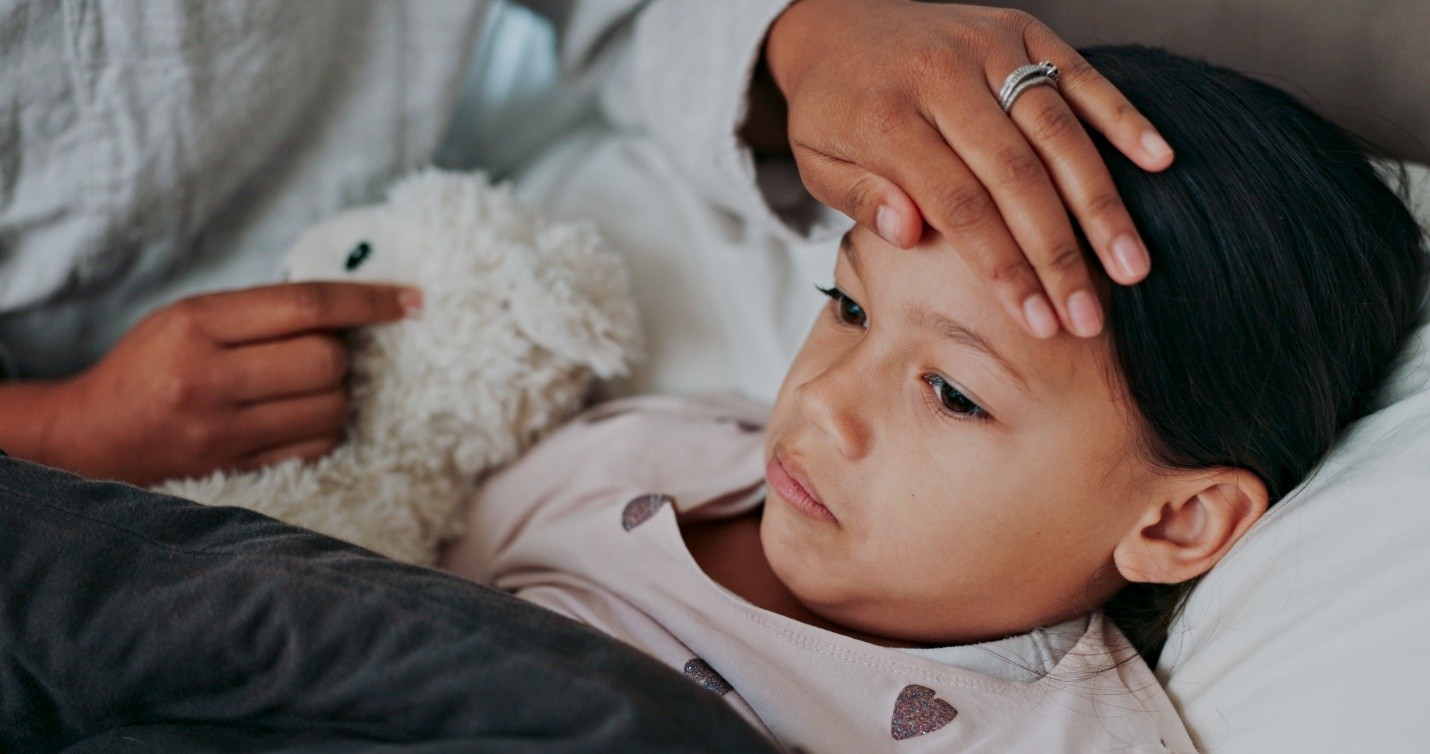Why do children get repeated infections?
Babies are born with immature immune systems. As a result, babies tend to get a high number of infections, usually 4 to 8 per year. Babies’ immune systems begin to mature soon after birth. The number of infections begins to go down with time. By the time children are of school-age, their rate of infection is usually the same as the rate for adults.
Path to improved health
Infections come in two main types: bacterial and viral. Bacterial infections are caused by bacteria. Viral infections are caused by a virus. The most common bacterial infections in babies are skin, ear, and throat. The most common viral infections in babies are respiratory, including respiratory syncytial virus (RSV), rhinovirus (RV), and influenza virus. Serious but infrequent newborn infections can include blood (bacteremia), urinary tract, and brain or spinal fluid infections (bacterial meningitis).
The most common signs of infection in your baby include:
- Fever
- Persistent crying
- Irritability
- Sleeping more than usual
- Lethargy (inactive)
- Refusing to take a bottle or breastfeed
- Breathing problems
- Rash
- Vomiting
- Diarrhea
Most children who have repeated infections don’t have any serious problems and grow up to be healthy adults. Make sure your child gets plenty of sleep and eats a healthy diet. Sleep and proper nutrition may be just as important as medicine in helping your child fight off infections.
Sometimes it’s easy to see the cause of repeated infections. In daycare centers, children give infections to each other. They drool and their noses drip. They touch each other and touch all the toys. This spreads infections. Some viruses can live on objects for several hours. As adults we have far less contact with each other’s germs, so we are less likely to catch so many infections.
Exposure to cigarette smoke (sometimes called “passive smoking”) is another cause for runny noses and wheezing in young children. Passive smoking is linked to asthma in children. It is also a risk factor for respiratory infection in children. This makes it important to keep all children away from cigarette or cigar smoke.
Structural changes in the sinuses or the eustachian tubes (connecting tubes in each ear) are a common cause of repeated infections in children. The term “structural changes” refers to differences in the bony parts of the skull, the sinuses, and the ears. These differences may be inherited. Some differences in body structure make it easier for a person to get infections because the normal drainage of the eustachian tube (in the ear) or sinuses (in the nose) is blocked. When the drainage is blocked, the number of bacteria grows. This leads to infection. In most children, as the head grows, drainage problems get better. If young children are having too many ear infections, they might need antibiotics or special ear tubes.
Allergies can also cause repeated sinusitis (stuffy or drippy nose) and wheezing. Allergies can cause inflammation inside the nose that lasts for a long time. Because of the inflammation, the normal drainage pathways of the nose and sinuses swell and get plugged up. Bacteria grow, causing an infection. Medicine is necessary to treat the cause of the infection, which is the allergy.
Persistent coughing and wheezing that occurs with mild viral infections may be a sign of asthma. Sometimes when we think children have pneumonia as a complication of a cold, they really have asthma. These children need asthma medicine in addition to other medicine for infection.
In some cases, the answer is chance alone. In rare cases, an otherwise healthy child will have 2 or 3 severe infections for no obvious reason. However, your doctor may want your child to have some simple screening tests to check for an immune deficiency (a weakness in the immune system). This is the main cause of repeated severe infections.
Things to consider
Most doctors become concerned if children go from simple viral infections to more complicated and severe bacterial infections. Examples are blood infections and pneumonia. Unusual infections or an increase in the number of infections over time are other warning signs.
If you have a family history of allergies and asthma, you may want to have your doctor check your child for these conditions.
What can I do to prevent repeated infections in my child?
- Wash your hands and your child’s hands often. Wash after using the bathroom and when preparing food. Also wash after sneezing, blowing your nose, and coughing. Scrub your hands for at least 20 seconds with soap and water.
- If you smoke, stop. Until you quit completely, smoke only outside of your home and outside of your car. Smoking in a room away from your child does not help. Air filters also do not help protect your child from secondhand smoke.
- Vaccinate your child against common childhood diseases. The American Academy of Family Physicians recommends immunizing all children and adolescents 0-18 years of age unless contraindicated.
What should I not do to treat an infection in my child?
- Don’t use ear candles. The U.S. Food and Drug Administration (FDA) advises against the use of ear candles. Ear candling involves inserting a special candle in the ear. It is supposed to pull wax and debris out of your ear as it burns. Ear candles can cause serious injuries and there is no evidence to support their effectiveness. There are prescription medicines that can help soften wax and help it drain naturally.




